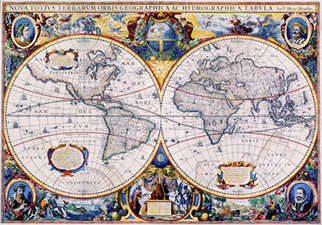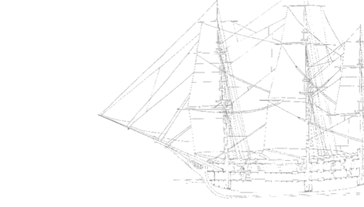 Above: Hendrik Hondius Nova Totius Terrarum Orbis Geographica AC Hydrographica Tabula (1630) Reproduced courtesy of Jock Clough |
Western Australian Museum -
Maritime European map-makers, from at least the 14th century, depicted a vast irregularly shaped region across the bottom of the globe that they labelled Terra Incognita – ‘Unknown Land’. So it remained until intellectual curiosity began to grapple with the puzzles of its existence. This exhibition focuses on some of the great European voyages that helped to unravel the mysteries of the South Land or Terra Australis. Motivated by desires to expand their empires, to find new trading partners and commercial opportunities European maritime nations began searching for new sea routes to the East. |
‘The Southern Continent having been seen on the West-side, by Tasman, in 1642, and on the east by Juan Fernandes above half a century before, and by others after him, in different latitudes…it is impossible for any one at this time to discover it. But the countries intermediate, equal in extent to all the civilised part of Asia, from Turkey to China inclusive, still remain unexplored. And although the land has been seen, and once visited, yet to open an intercourse with its inhabitants, is a task still to be performed.’ Alexander Dalrymple, Voyages in the South Pacific Ocean, 1770: xvii, xxiv.








